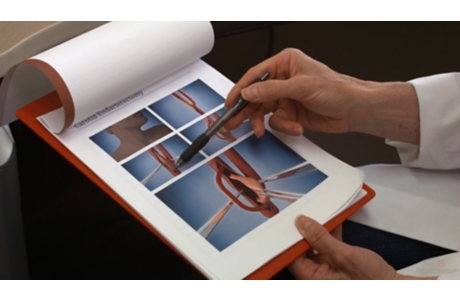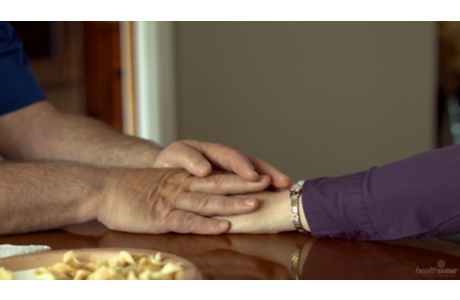Stroke: How to Prevent Another One
Topic Overview
After you’ve had a stroke, you may be worried that you could have another one. That’s easy to understand. But the good news is that there are things you can do to reduce your risk of having another stroke. Taking medicine, doing stroke rehabilitation, and making healthy lifestyle changes can help.
Take your medicines
You’ll need to take medicines to help prevent another stroke. Be sure to take your medicines exactly as prescribed. And don’t stop taking them unless your doctor tells you to. If you stop taking your medicines, you can increase your risk of having another stroke.
Some of the medicines your doctor may prescribe include:
- Aspirin and other antiplatelet medicines to prevent blood clots.
- Anticoagulants to prevent blood clots, especially for people who have atrial fibrillation (an irregular heartbeat).
- Statins and other medicines to lower cholesterol.
- ACE inhibitors and ARBs (angiotensin II receptor blockers) to lower blood pressure.
Manage other health problems
You can help lower your chance of having another stroke by managing other health problems that you might have. Health problems, such as high blood pressure, high cholesterol, and diabetes, can increase your risk of a stroke.
If you have any of these health problems, you can manage them with healthy lifestyle changes along with medicine.
Take part in a stroke rehabilitation program
Taking part in a stroke rehabilitation (rehab) program can help you learn how to reduce your risk of having another stroke. A stroke rehab program is designed for you and is supervised by doctors and other specialists.
This type of program helps you to regain skills you lost or to make the most of your remaining abilities after a stroke. It also helps you take steps to prevent another stroke. In the program, a team of health professionals provides education and support to help you build new, healthy habits.
In stroke rehab, you’ll learn how to manage any other health problems that you might have, such as high blood pressure, high cholesterol, diabetes, and depression. You’ll also learn how to exercise safely, eat a healthy diet, and quit smoking if you smoke. You’ll work with your team to decide what lifestyle choices are best for you.
If your doctor hasn’t already suggested it, ask him or her if stroke rehab is right for you.
Make healthy lifestyle changes
Healthy lifestyle changes can help lower your risk of having another stroke. And they may help you feel better and live longer. Here are some things you can do:
- Quit smoking, and avoid secondhand smoke. If you smoke, try to quit. Medicines and counseling can help you quit for good.
- Be active. Ask your doctor what type and level of activity is safe for you. Your doctor may recommend ½ to 1½ hours a week of moderate exercise. One way to do this is to be active 30 minutes a day, 1 to 3 days a week. It’s okay to be active in 10-minute blocks throughout the day. If you are in a stroke rehab program, your rehab team can make an exercise program that is right for you.
- Eat heart-healthy foods. These include fruits, vegetables, high-fiber foods, and foods that are low in sodium, saturated fat, and trans fat. Eat fish at least 2 times each week. Oily fish, which contain omega-3 fatty acids, are best. These fish include salmon, mackerel, lake trout, herring, and sardines.
- Stay at a healthy weight. Being overweight makes you more likely to have high blood pressure, heart problems, and diabetes. These conditions make a stroke more likely.
- Limit alcohol to 2 drinks a day for men and 1 drink a day for women.
It’s also important to:
- Get a flu vaccine every year.
- Ask for helpif you think you are depressed.
References
Other Works Consulted
- Kernan WN, et al. (2014). Guidelines for the prevention of stroke in patients with stroke and transient ischemic attack: A guideline for healthcare professionals from the American Heart Association/American Stroke Association. Stroke, 45(7): 2160–2236. DOI: 10.1161/STR.0000000000000024. Accessed July 22, 2014.
- Winstein CJ, et al. (2016). Guidelines for adult stroke rehabilitation and recovery: A guideline for healthcare professionals from the American Heart Association/American Stroke Association. Stroke, published online May 4, 2016. DOI: 10.1161/STR.0000000000000098. Accessed June 3, 2016.
Current as of: September 26, 2018
Author: Healthwise Staff
Medical Review:E. Gregory Thompson MD – Internal Medicine & Martin J. Gabica MD – Family Medicine & Kathleen Romito MD – Family Medicine & Adam Husney MD – Family Medicine & Richard D. Zorowitz MD – Physical Medicine and Rehabilitation
This information does not replace the advice of a doctor. Healthwise, Incorporated, disclaims any warranty or liability for your use of this information. Your use of this information means that you agree to the Terms of Use. Learn how we develop our content.




